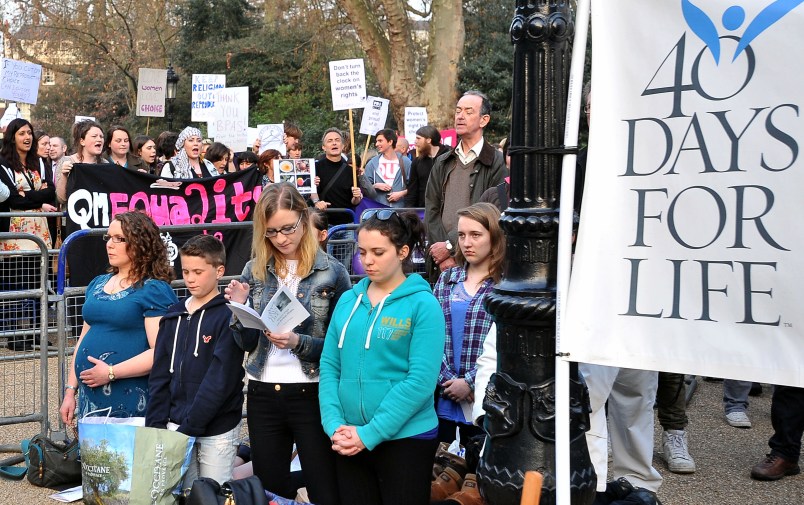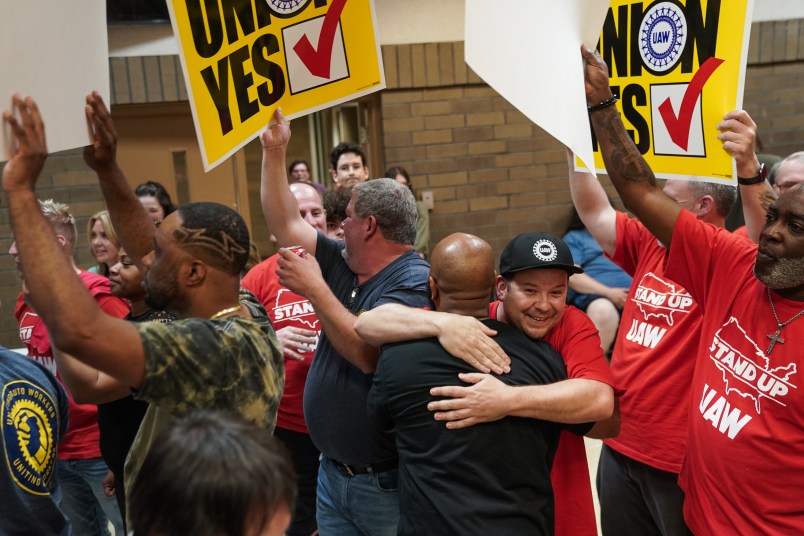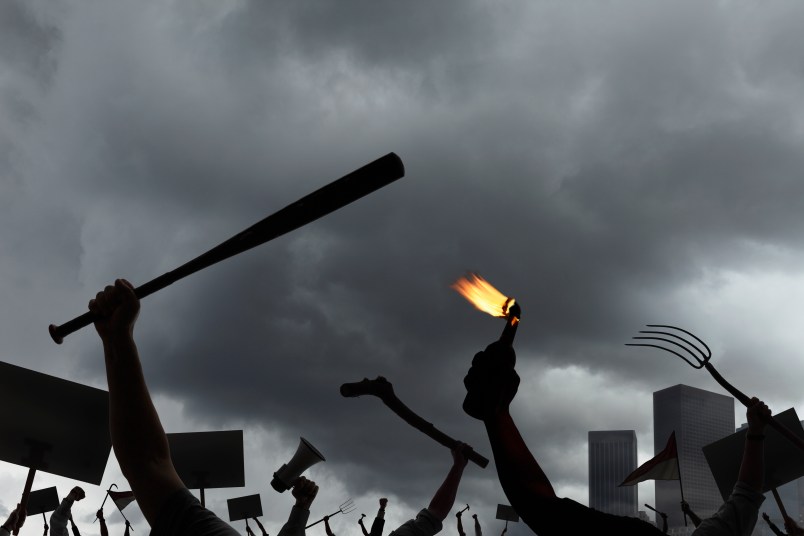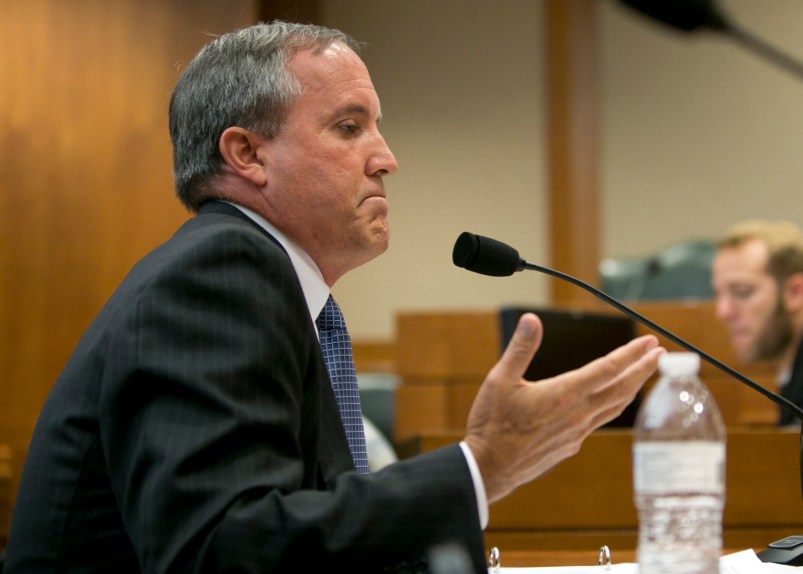I never for one moment thought I would feel envy at a 40 Days for Life rally.
I’ve been to a number of clinics, marches and other events in my time covering anti-abortion groups and clinic access. I’ve seen Good Friday protests with close to 500 people all marching silently and somberly in an endless loop in front of a clinic, and I’ve watched countless self-proclaimed sidewalk counselors chase patients through doors, yelling at them not to kill their babies.
Still, although I have seen people who say they are with 40 Days for Life at abortion clinics before, I had never been to an official 40 Days for Life event, and I couldn’t resist this year’s local launch. The rally was at a clinic not so far from home, and one of the 40 Days for Life founders was coming to speak. I spent the weekend reading through the 40 Days book, packed up my notepad, laptop and recorder and took off for my local abortion provider’s building.
I consider myself a fairly savvy reporter on reproductive rights and clinic access, but was mildly embarrassed to first end up at the wrong building, circling the Robbinsdale Women’s Center and its kiosk offering free pregnancy tests for 10 minutes before I was positive that it was not in fact the abortion provider I was looking for.
Robbinsdale Clinic P.A., the actual abortion clinic, was across the street and slightly down the block. Set back from the street and decidedly nondescript, I overlooked it the first time I walked by. I figured out my mistake a moment later, when I noticed the large white crucifix looming in the lawn next door.
It was Day 2 of the 40 Days, and already there was no one standing vigil in front of the clinic, a sure sign, I assumed, of a lack of devotion to the cause. I have to admit I was smug. After all, on a beautiful fall day in Minnesota, we look for excuses to stand outside. A constant presence isn’t difficult when the breeze is cool and the leaves are turning colors in the trees lining the sidewalk.
That, however, was exactly what I had wrong, according to Sean Carney, one of the two founders of the 40 Days for Life campaign, which started 10 years ago in College Station, Texas. “We see, particularly in this part of the country, that cold weather draws more dedication, and we need that,” Carney told the group. “The men and women seeking abortions need to see that we are for real, that we are not self-righteous Christians out here telling other people how to live. We are a movement of converts, a movement of people who at one point had abortions, or participated in abortions, or paid for abortions, and our dedication to ending abortion can be shown by our enduring extremely cold weather…It speaks to the heart of what the prolife movement represents. That we are willing to get out of our comfort zone to save these unborn children.”
It would shock no one to learn I disagreed with the majority of what Carney, Steve Karlen out of 40 Days in Wisconsin, and Rev. Brian Walker of Minnesota’s Pro-Life Action Ministries told the audience. I don’t believe that all of the women or girls who enter an abortion clinic are really hoping that someone will talk them out of their appointments, will sweep them away to a nearby resource center where she will be catered to and cared for until the moment she gives birth. I’ve been pregnant four times, I’ve had three live births, and I’ve had a later miscarriage that required medical intervention. Being pregnant and giving birth is at many points frustrating, painful and sometimes dangerous even when that pregnancy is a wanted one, and when over 60 percent of those obtaining abortions already have at least one child, that is a fact that they are very, very familiar with.
Still, there was an earnestness that came from those who attended the 40 Days for Life Rally in Minnesota, and the national activists who urged them on with their pleas to bear witness for the next 38 days. It was a little group, a mix of young parents and older retirees, a mere 25 or so attendees gathered on the grounds of small white wood and brick building next door to Robbinsdale Clinic P.A.
Small as the group was, though, it was obvious that they truly, honestly believed that theirs was a necessary effort that would bring about the end of legal abortion. That without their efforts, their constant witness, abortion was never going to end.
As I watched them, and as I listened to the speakers, I found myself wondering where was our own 40 Days movement?
According to the first chapter of Carney and his co-author David Bereit’s book, 40 Days was created and birthed by four activists sitting around a table, looking for a way to re-energize a lagging and flailing local anti-abortion movement. It provided a mission and focus to bring their local community back together, engaged in one action that people could take both large and small pieces of ownership in, which converted soft supporters into activists. That became an easily replicable model that then spread into other cities, and eventually turned into a coordinated, national and international movement.
The longer I listened, the more I thought about why it has been so difficult for us to have a campaign of our own. For a number of years, but most especially since 2011, as a movement we have spent much of our energy and effort fighting model legislation and clinic closures. We’ve counter protested each rally, we’ve filled the hearings with witnesses, we’ve helped the patients past the anti-abortion activists and to the clinic doors.
But what are we doing to move our own message forward, versus reacting to their actions. Where do we find our own campaign, one that isn’t a response to another ban or closure or anti-abortion event, which we are able to use proactively to both recharge our activists and convert allies into active advocates?
We know the passion and the desire is there, waiting to be tapped. The 2013 Orange Army in Texas made it clear that soft supporters are just waiting for an opportunity to be utilized and engaged. More recently in Missouri, just last May, abortion rights supporters spoke for three days straight in protest of the state’s proposed 72 hour wait for an abortion, which had yet to pass.
Too often we are waiting for a reason to rally, a moment to tie our activism to. The simplicity of 40 Days for Life? They just sat down, thought it up, and then two weeks later they did it.
I have no idea what a productive, pro-abortion rights campaign would look like. Patients have enough to cope with when they try to access a provider, and between anti-abortion activists and escorts and sometimes even counter protesters, more people helps no one. We don’t have a place where we can stand vigil, and our stories are often far more complex that a silent prayer or a rosary.
What I do know, however, is that the reproductive rights movement needs a campaign that can reenergize its activists and engage with those who are on the fringe, who have been galvanized by the continuing attacks against our rights. It needs to offer a multitude of ways to engage, each of which can be tailored to the skills and availability of those who want to participate. It must be tied to no legislation, and its goals modest. We don’t need a victory right now nearly as much as we need to build sense of community.
Because that’s what I saw in Robbinsdale. There may have only been two dozen people at the rally I went to, but even within that small group crowded on a driveway, I could tell that a new family was born, bonded together by their one single focus. And they had drawn together for the simple reason that someone asked them to show up and then gave them a role or responsibility that perfectly fit their needs in order to make them a part of the team.
Walking away from the event, I still had no desire to join up with 40 Days. But I couldn’t shake the idea that someone, soon, needs to help us come up with a community building campaign of our own.
I know I have 40 days to give.
Robin Marty is a freelance writer, speaker and activist. Her current project, Clinic Stories, focuses on telling the history of legal abortion one clinic at a time. Robin’s articles have appeared at Rolling Stone, Bitch Magazine, Ms. Magazine, In These Times, Truth Out, AlterNet, RH Reality Check and other publications.









